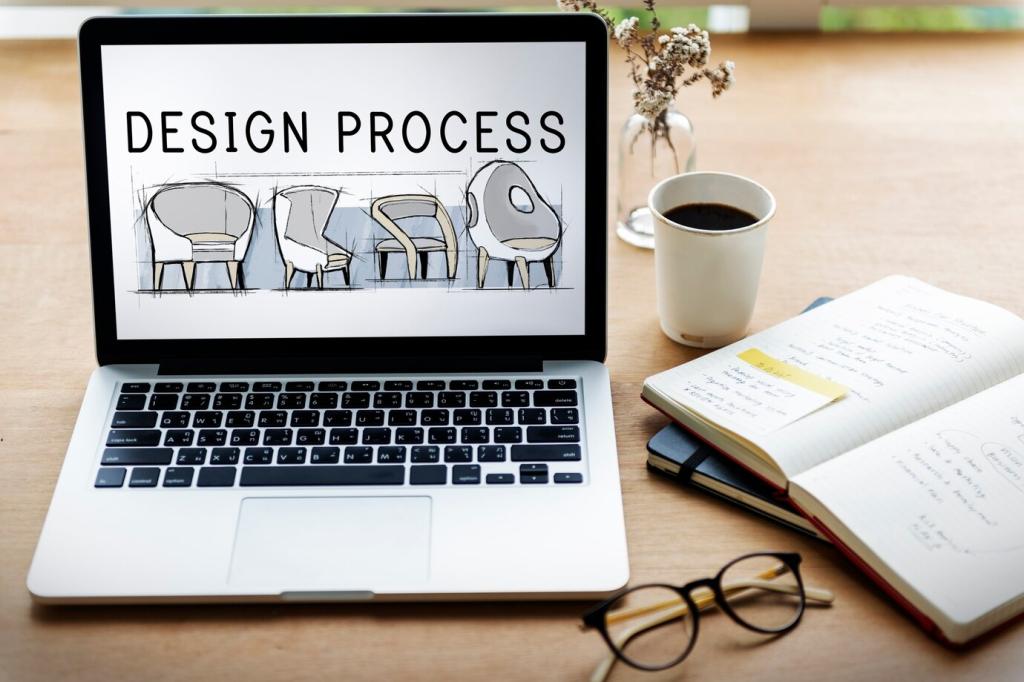Design Trends As Your Career Compass
Chosen theme: Understanding Design Trends for Career Development. Step into a friendly, practical space where trends become clarity, confidence, and momentum for your next role. Let’s translate what’s changing in design into real steps for your growth—subscribe, ask questions, and share your goals so we can tailor future guides to your journey.


Why Trends Matter To Your Career Trajectory
Not every popular pattern deserves your time. The difference between a fad and a force is persistence and impact. Follow signals that show staying power: cross-industry adoption, measurable outcomes, and alignment with user needs.
Spotting Real Trends And Filtering Noise
01
Reliable Signals To Track
Scan product release notes, design system changelogs, accessibility standards updates, and developer conference talks. When multiple sources emphasize similar shifts, you’ve likely found a genuine direction worth your attention.
02
Use A Simple Trend Triage
Score candidates by user benefit, business impact, ecosystem support, and learning effort. If a trend delivers clear wins with reasonable ramp-up and strong community backing, it earns a place in your roadmap.
03
Create A Monthly Trend Lab
Commit to a recurring experiment. Pick one trend, build a small artifact, and document outcomes. Share lessons publicly to attract feedback, demonstrate curiosity, and invite peers to subscribe for follow-ups.
Translating Trends Into Portfolio Proof
Start with the problem, explain the relevant trend, outline hypotheses, show your process, and quantify results. Close with reflections on trade-offs, accessibility, and how you would iterate with more time or data.


Translating Trends Into Portfolio Proof
Choose metrics that fit the trend. For motion, track task clarity or error rates. For AI assistance, measure time saved or completion quality. For typography, evaluate readability and comprehension across contexts.
Use AI to generate variations, summarize research, and prototype flows faster. Document how you validate outputs, reduce bias, and keep human judgment in control. Share tips with our community and subscribe for tutorials.


Publish Useful, Bite-Sized Breakdowns
Post short analyses of a trend’s benefits, risks, and use cases. Include examples and a small template. Invite readers to remix it and tag you, turning knowledge into conversation and future collaborations.

Join Communities With Purpose
Participate where practitioners gather: design system forums, accessibility meetups, product research groups. Ask generous questions, offer critiques respectfully, and share your experiments. People subscribe when you consistently add value.
Leah’s Shift To Service Design
Leah mapped the trend toward end-to-end journeys and systems thinking. She prototyped cross-channel touchpoints, improved handoffs, and proved operational savings. Her portfolio spoke to strategy, earning her a service design role.
Omar’s Motion For Clarity, Not Decoration
Omar embraced purposeful motion and micro-interactions. By clarifying state changes and error recovery, he cut support tickets noticeably. His thoughtful documentation made engineers fans, leading to a senior interaction designer offer.
Wei’s Data Visualization Niche
Wei noticed complex products needed clearer analytics. She mastered accessibility-friendly charts, responsive layouts, and color semantics. Her case studies showed decision speed gains, attracting product analytics teams and meaningful leadership opportunities.

Audit your industry, shortlist three trends, and score them. Choose one. Set learning goals, collect reference patterns, and build a small prototype. Share a weekly update and ask readers for constructive critique.
Your 90-Day Trend-Led Career Sprint
Expand the prototype into a case study. Run lightweight tests, integrate accessibility checks, and quantify outcomes. Document trade-offs honestly. Publish a mid-sprint report and invite subscribers to suggest edge cases.
